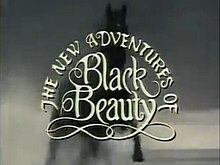Chapter 41: The Butcher
byChapter 41: The Butcher begins with an honest reflection on the demanding life horses endure, especially in cities where work never slows. The narrator, an experienced horse, observes the varying treatment horses receive depending on the temperaments of their owners. While he’s known hard labor before, he explains how much worse it becomes when handled without patience or understanding. He describes seeing a little gray pony, startlingly similar to his old companion Merrylegs, being whipped and yanked roughly by a thoughtless driver. The pony, clearly worn out, stumbles as it pulls a heavy load through crowded streets. Though small, its effort is great, yet kindness is missing from its daily routine. The horse’s condition and the way it is treated deeply trouble the narrator. It isn’t just hard work that breaks animals—it’s the absence of kindness that truly wears them down. This memory stays with him as he continues his journey through the city.
Later, the narrator observes a heated exchange that brings this harsh reality into sharper focus. A butcher’s horse arrives, breathing heavily, foam around its mouth, and clearly pushed beyond its limits. The butcher confronts his son, who drove the cart, accusing him of overworking the horse to the point of collapse. The boy insists he had no choice—last-minute customer demands required him to hurry. His father, though frustrated, warns that such carelessness could land them both in trouble if the horse were to fall or die from exhaustion. It’s a tense moment that reveals the deeper issue: these animals are often caught between human ambition and urgency. The son isn’t intentionally cruel, but he is trapped in a cycle where speed is valued over safety. This incident underlines how business pressures and unrealistic customer expectations often translate into suffering for animals expected to work nonstop, without rest or proper care.
Despite this bleak scene, the chapter offers a more hopeful contrast. The narrator recalls a coster-boy and his pony working nearby, a pair that stood out for their bond. Unlike the butcher’s son, this boy speaks kindly to his pony, pats its neck when it performs well, and shares bits of food when resting. The pony, in turn, responds willingly, ears perked and body relaxed, even while hauling a loaded cart. Their interaction feels more like that between companions than between worker and tool. The narrator watches with quiet appreciation, noting that the boy’s affection and consistency make the pony’s job lighter, even if the physical labor remains the same. This moment is a reminder that compassion doesn’t cost anything but can transform the entire experience for both human and animal. Such relationships are rare but not impossible—and they make all the difference.
In this chapter, the narrator subtly critiques how society views animals as extensions of labor rather than as beings with needs, limits, and feelings. The contrast between the compassionate coster-boy and the pressured butcher’s son illustrates a larger truth: how one treats animals often reflects broader values. The text does not excuse overwork caused by external pressure, but it calls for awareness and accountability in everyday decisions. The scene at the butcher’s shop highlights the role businesses and customers play in shaping how animals are treated. Had the customers planned better or accepted longer wait times, the horse may not have suffered. Anna Sewell’s message is clear—empathy is not just an individual trait but something that must be built into how society functions. When urgency overrides care, the most vulnerable—be it animals or people—bear the brunt.
This chapter also offers timeless relevance. Even today, working animals in various parts of the world continue to suffer due to overloading, underfeeding, and neglect. Organizations like the Brooke and SPANA still campaign for better working conditions for animals in transport, farming, and tourism. The story of the little gray pony and the butcher’s horse remains powerful because it speaks to the consequences of carelessness and the potential of compassion. Beauty’s quiet reflections offer not just storytelling, but a call to action—challenging readers to see animals not as machines, but as lives intertwined with ours. The difference between suffering and safety often lies in the small decisions people make every day. In those decisions, as Sewell shows through Beauty’s eyes, lies the true measure of a society’s humanity.

